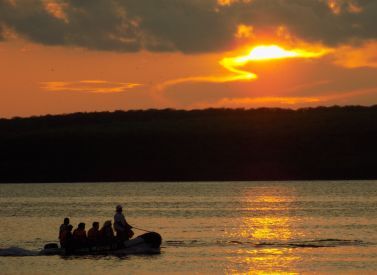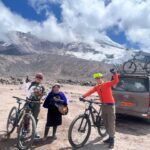Galapagos Islands Guide: A list of the top 10 birds to see
 by Kathy Jarvis on 5th June, 2020
by Kathy Jarvis on 5th June, 2020
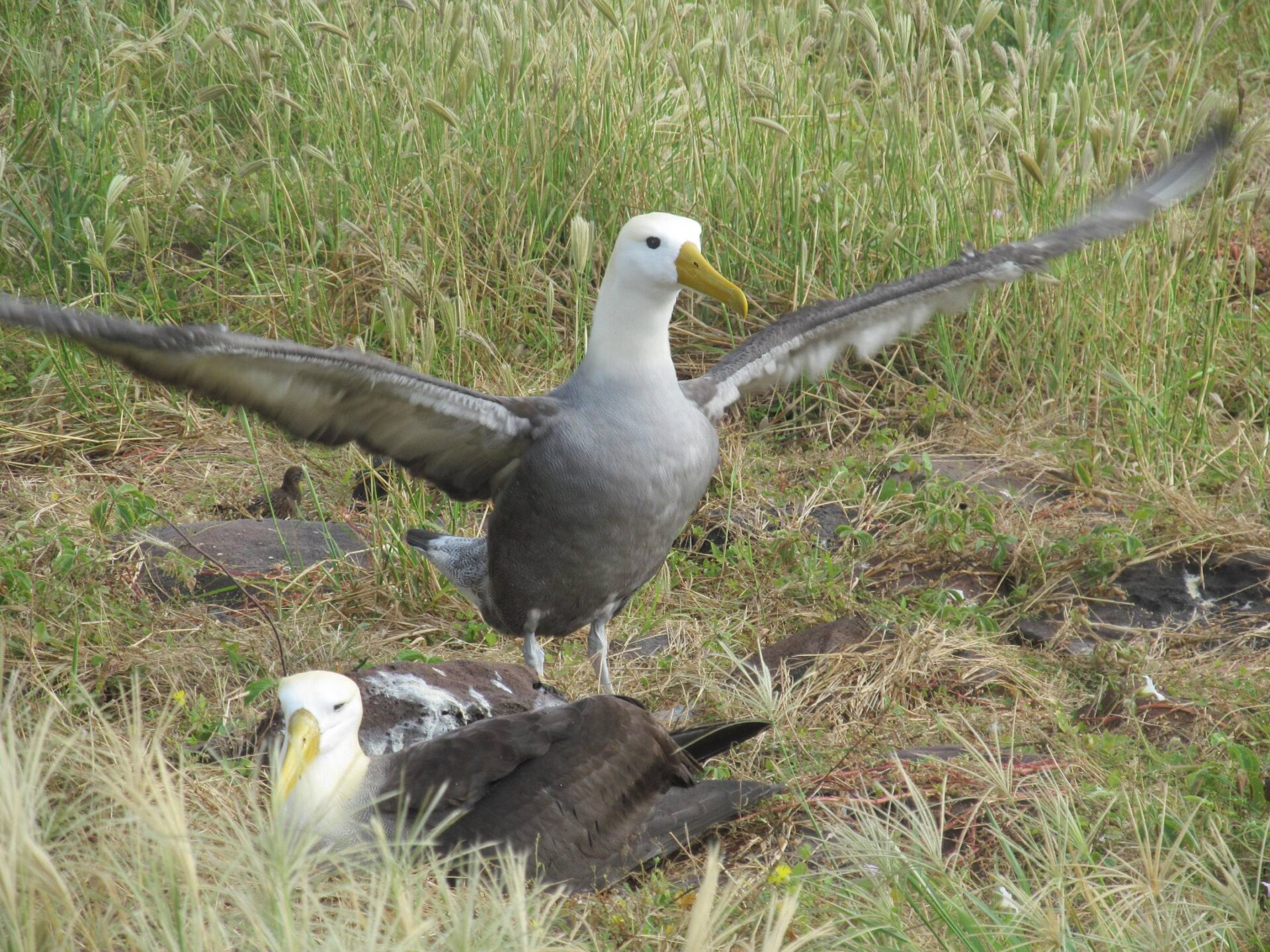
The Galapagos is a wonderful place to visit. It is on the bucket list of many a nature enthusiast, especially for the fauna and in particular, the Galapagos birds.
Here you will find our guide to the top 10 Galapagos birds.
Blue-footed Booby
Scientific name: Sula nebouxii
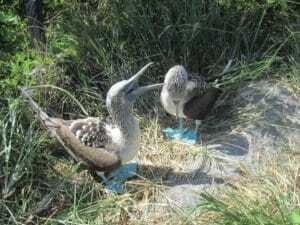
Blue-footed Booby
This bird is a favourite for those visiting the Galapagos. It’s brightly coloured blue feet and its distinctive “waddle” and courtship display is bound to bring a smile to your face. It nests on the ground.
Size: 76-84 cm, 152 cm wingspan.
Where to see them: Large colonies can be found on Espanola, Fernandina, Floreana, Isabela, Pinzon, and Santa Cruz. There is a very large colony on North Seymour.
When to see them: The best time to see them on land is in the breeding season between June and August.
Red-footed Booby
Scientific name: Sula sula
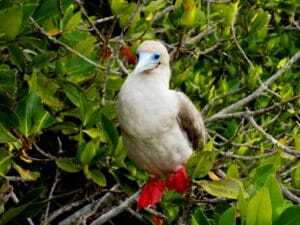
Red-footed Booby
This is the smallest of the booby family and its stand out feature is its red feed. The plumage of the majority in the Galapagos is brown but some can be white.
Size: 66-77 cm, 91-101 cm wingspan.
Where to see them: The principal nesting sites are on Genovesa and San Cristobal. They can be seen occasionally on other islands throughout the Galapagos. They build their nests on the top of shrubs or in small trees
When to see them: The best time to see them is between late January and September when they nest.
Nazca Booby
Scientific name: Sula granti
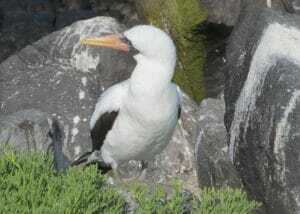
Nazca Booby
This is the largest of the booby family. Its plumage is black and white and they have a distinctive orange bill. The can be confused with the red-footed booby and the masked booby.
Size: 81-92cm, 152 cm wingspan.
Where to see them: The best places to see them are on Genovesa, Punta Pitt on San Cristobal Island and Punta Suarez on Espanola.
When to see them: You can see them flying year round. In nesting season the best places are on Genovesa between August and November and on Española between November and February.
Galapagos Penguin
Scientific name: Spheniscus mendiculus
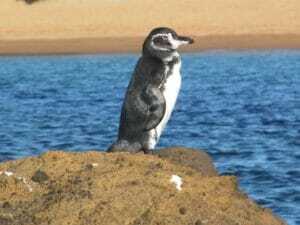
Galapagos Penguin
They are endemic to the islands and one of the smallest penguin species in the world. They are also the most northerly penguin species nesting entirely in the tropics.
Size: 48-52 cm
Where to see them: The best places to see them are on Isabela and Fernandina islands. Other locations are Floreana, Santiago and Bartolome. If lucky, those swimming around Pinnacle Rock on Bartolome may find themselves in the company of penguins.
When to see them: All year round.
Magnificent Frigatebird
Scientific name: Fregata magnificens
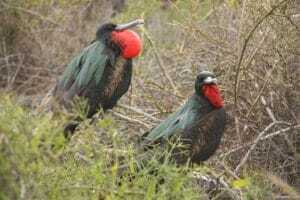
Magnificent Frigatebird
This striking bird is a large dark long-winged sea-bird with a deeply forked tail. The male has a distinctive red gular sac. Charles Darwin nicknamed them the “condor of the oceans”. A curious fact is they have the largest wingspan to body weight ratio of any bird in the world.
Size: 89-114 cm, 217-214 cm wingspan
Where to see them: North Seymour, Floreana, San Cristobal and Genovesa are where the main breeding colonies are found. They are also found throughout the islands and may be spotted foraging over coral reefs and the coast as well as in mangroves and deciduous trees.
When to see them: All year round.
Waved Albatross
Scientific name: Phoebastria irrorata
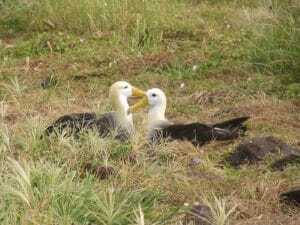
Waved Albatross
Those lucky enough to see the courtship dance of the largest bird in the Galapagos are in for an unforgettable experience. They clack bills, circle bills, nod their heads, waddle and moo like a cow! Another spectacle is seeing them launch off a cliff edge to set off in flight.
Size: 85-93 cm, 230-240 cm wingspan.
Where to see them: Their main breeding grounds are on Espanola Island.
When to see them: From April to December. They lay their eggs from April to June and incubate them for two months. The young usually leave the colony by January and head out to sea. They will only return six years later to find a mate.
Galapagos Mockingbird
Scientific name: Mimus parvulus
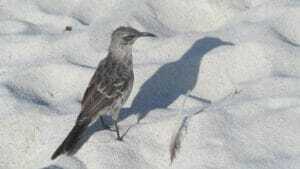
Mockingbird
This is the most common of the four mockingbird species found in the Galapagos. They are a medium sized bird with a brown and white colouring. A curious fact is that apparently marine iguanas recognise the alarm calls of the mockingbirds and act upon them. They can sometimes be seen riding on the backs of iguanas!
Size: 25 cm
Where to see them: They are found throughout the islands. They nest in trees and cacti.
When to see them: They breed from October to April.
Swallow-tailed Gull
Scientific name: Creagrus furcatus
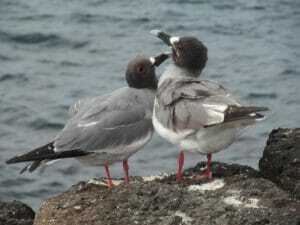
Swallow-tailed Gull
This gull is unmistakable as it is the only whitish gull with a forked tail. Its breeding plumage is a distinctive dark grey head with a large eye surrounded by a red eye-ring.
Size: 51-58 cm, 130 cm wingspan.
Where to see them: Mainly in the eastern islands with the largest colonies on the rocky shores and cliffs of Hood, Tower and Wolf Islands.
When to see them: All year round.
Flightless Cormorant
Scientific name: Phalacrocorax harrisi

Flightless Cormorant
This is the heaviest of the cormorants and the only one that cannot fly. For this reason they are confined to lava shorelines.
Size: 89-100 cm
Where to see them: On the north western coasts of Isabela and the east coast of Fernandina.
When to see them: All year round. They nest between May and October.
American (Caribbean) Flamingo
Scientific name: Phoenicopterus ruber
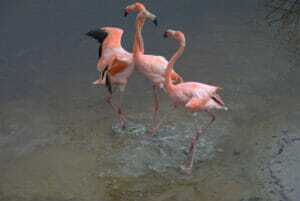
American Flamingo
The flamingos found in the Galapagos are significantly smaller and lay smaller eggs than those in the Caribbean. They are different shades of pink and have black tipped wings which are only visible in flight.
Size: 120 cm, 140 cm wingspan.
Where to see them: The best places to see them are in Punta Cormorant lagoon, Floreana and Quinta Playa or Puerto Villamil on Isabela. There are also possibilities to see them in Punta Moreno, Isabela, Bahia Tortuga and Las Bachas on Santa Cruz and Puerto Egas on Santiago. Due to their small population they are difficult to find and are usually spotted in brackish lagoons close to beaches.
When to see them: Best to see them in the nesting period from March to July.
Share


 a Group Tour
a Group Tour  a Tailor Made Tour
a Tailor Made Tour 

